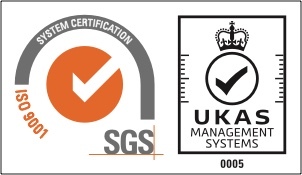The workspace looks very different in 2021. Attitudes towards 9-5 jobs have shifted and sitting in an office every day is no longer the norm. If you're an employer left wondering how to adapt, here are a few ways to make a hybrid workforce work for your business.
Make Sure Staff Feel Supported
One of the biggest issues when considering a hybrid work environment is making sure that everyone, particularly new staff, have clear expectations. Understandably, new employees may need more support in general, but this is especially the case when working from home. Even if an employee has been in the company for years, home working requires adjustment, so extra training is essential.
For a more established member of staff, you should train them to use company systems or software effectively at home – particularly in relation to cybersecurity and data protection. This also applies to a newer member of your team, but you may also want to consider including training on company processes and provide printed copies of any information they may need to help them settle in and hit the ground running. Additional training which may also help your staff members get the most out of their working day when they're at home is understanding Health and safety issues such as maintaining correct posture and display screen height. But other factors are also important such as looking after mental health, feeling engaged and part of a team, whilst also maintaining company standards in terms of client and colleague interaction. These are all critical issues that need to be carefully managed.
Keeping Everyone in the Loop
Other concerns that many employers may have are around productivity, whether office or home-based. . One of the best ways to manage this is by encouraging constant communication. Use a service like Microsoft Teams, Skype Messenger, or even a WhatsApp group chat to give your staff a space to ask questions, discuss issues and most importantly, keep them accountable and on task. Encouraging open communication online throughout the day will help staff transition to hybrid working when they're likely used to walking over to a co-worker for guidance or answers.
Concentrate on the Positives
The truth is that when your employees work from home, they might well approach work in a more relaxed or comfortable way. Your first instinct might be that this isn't something you should encourage; however, if the work is getting done to a high standard yet your employee has a chance to improve their work/life balance — perhaps by putting a load of washing on during the workday or getting the kids' tea ready for when they get home — what harm is there? You have an excellent opportunity to create a much happier workforce, and ultimately this means they'll be more willing to work harder for you in the long term.
It can be challenging to adapt to hybrid working when you've worked in an office for most of your life but when it is implemented with consideration, transparency and trust, it can be a great way to offer a more flexible, employee-focused workplace that boosts productivity. Just make sure that you put all necessary training and support systems in place, and you'll be sure to reap the rewards of hybrid working.
At GBS Corporate Training, we have helped many businesses move to a hybrid work model over the past year. We provide training and support for teams to ensure a smooth transition. You can read about our Hybrid Team Working course here or get in touch to discuss a bespoke training solution based on your needs.







